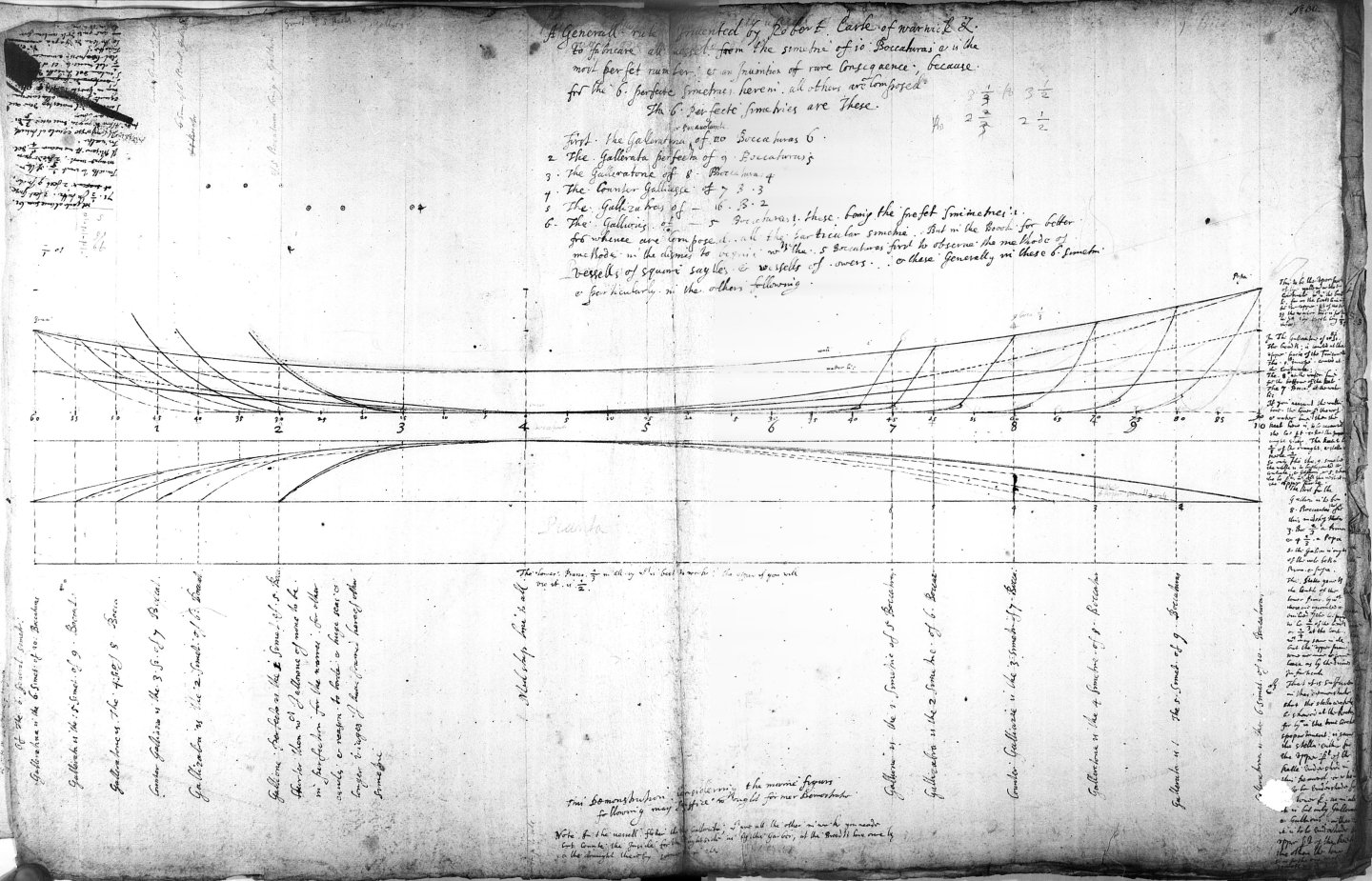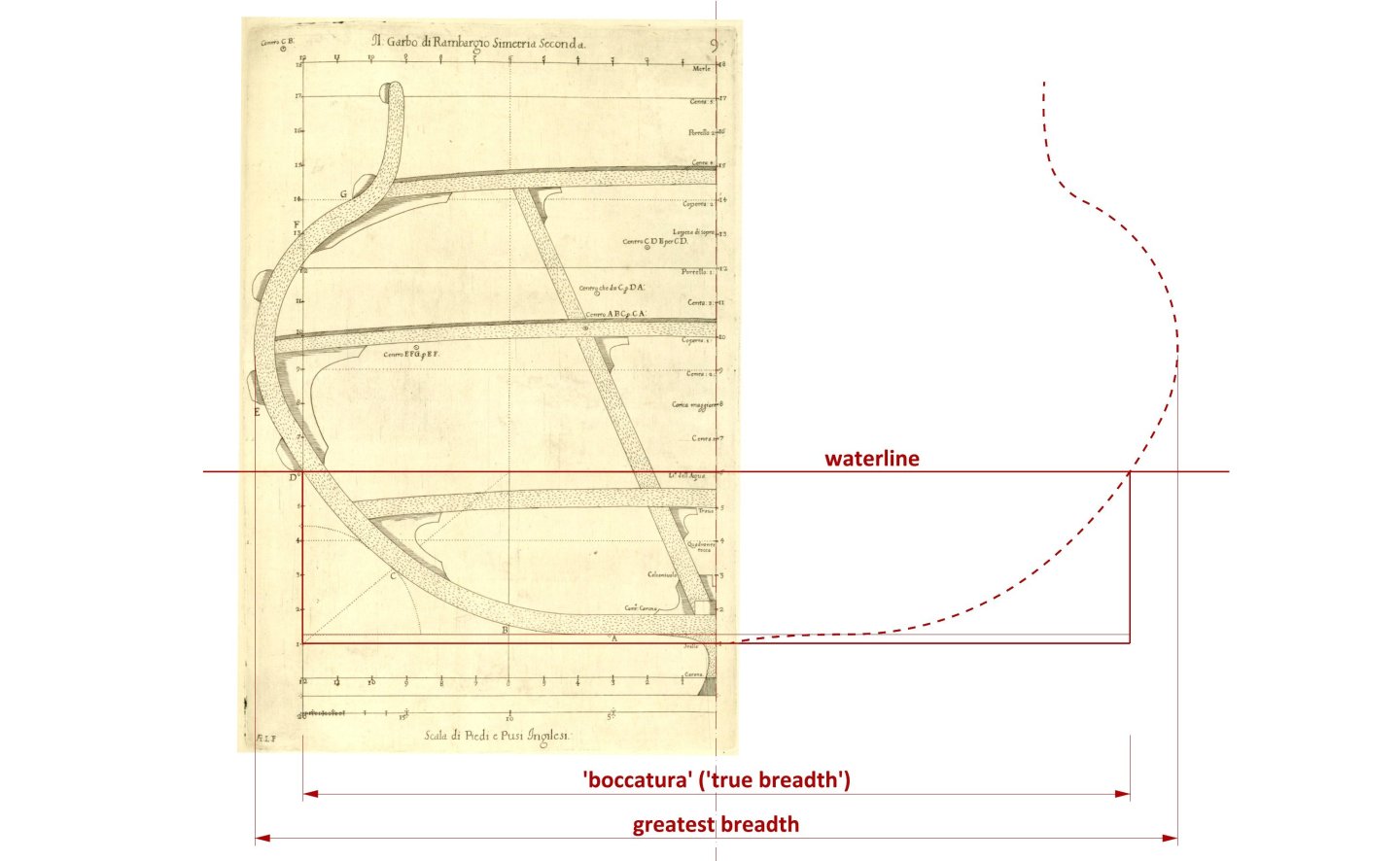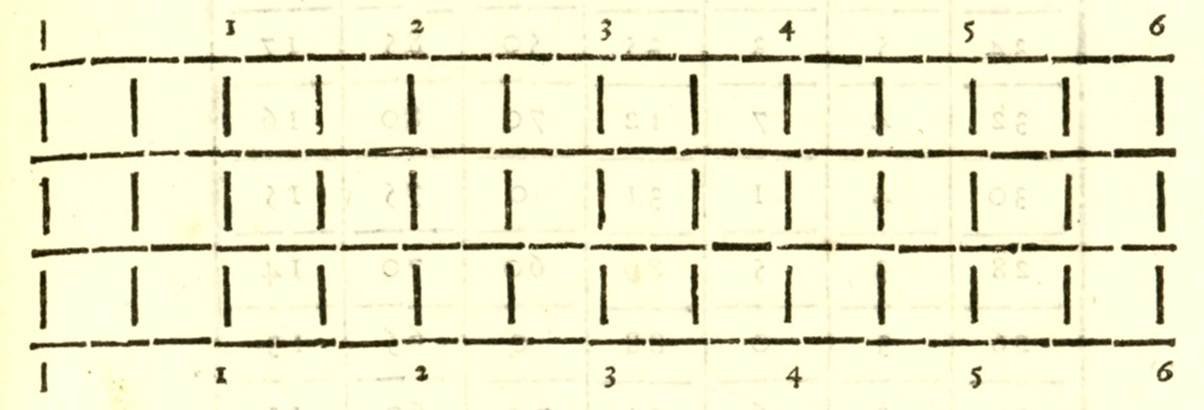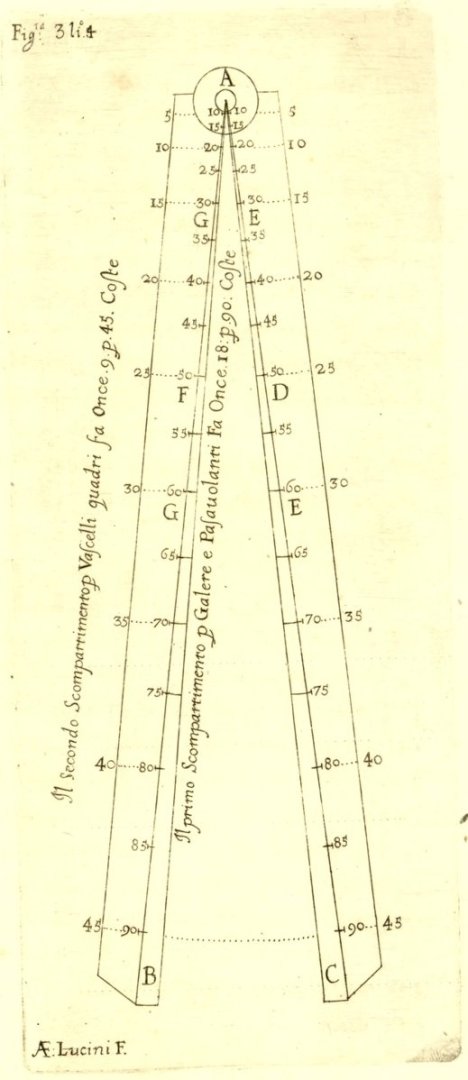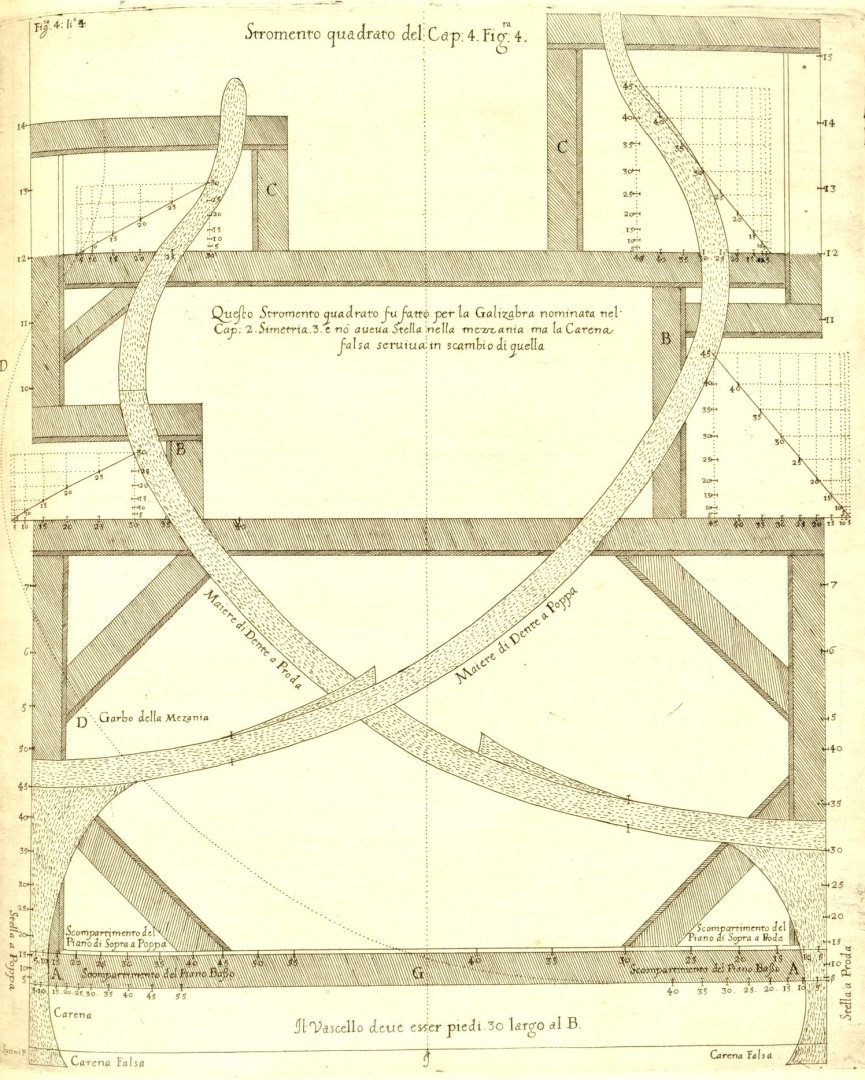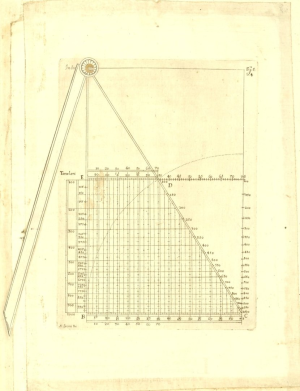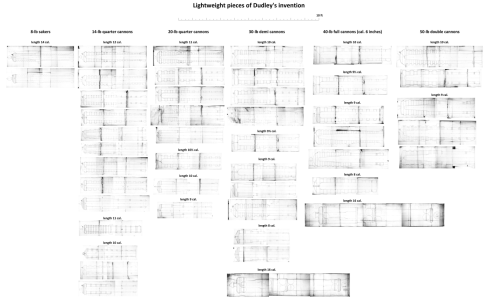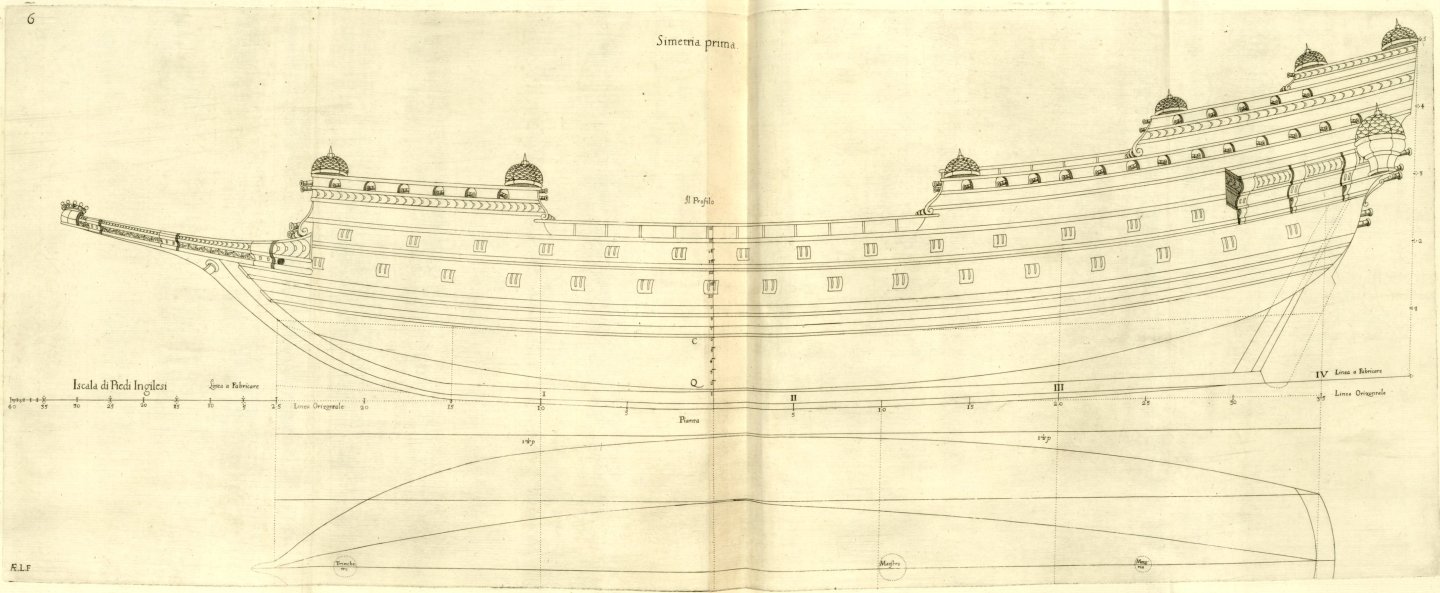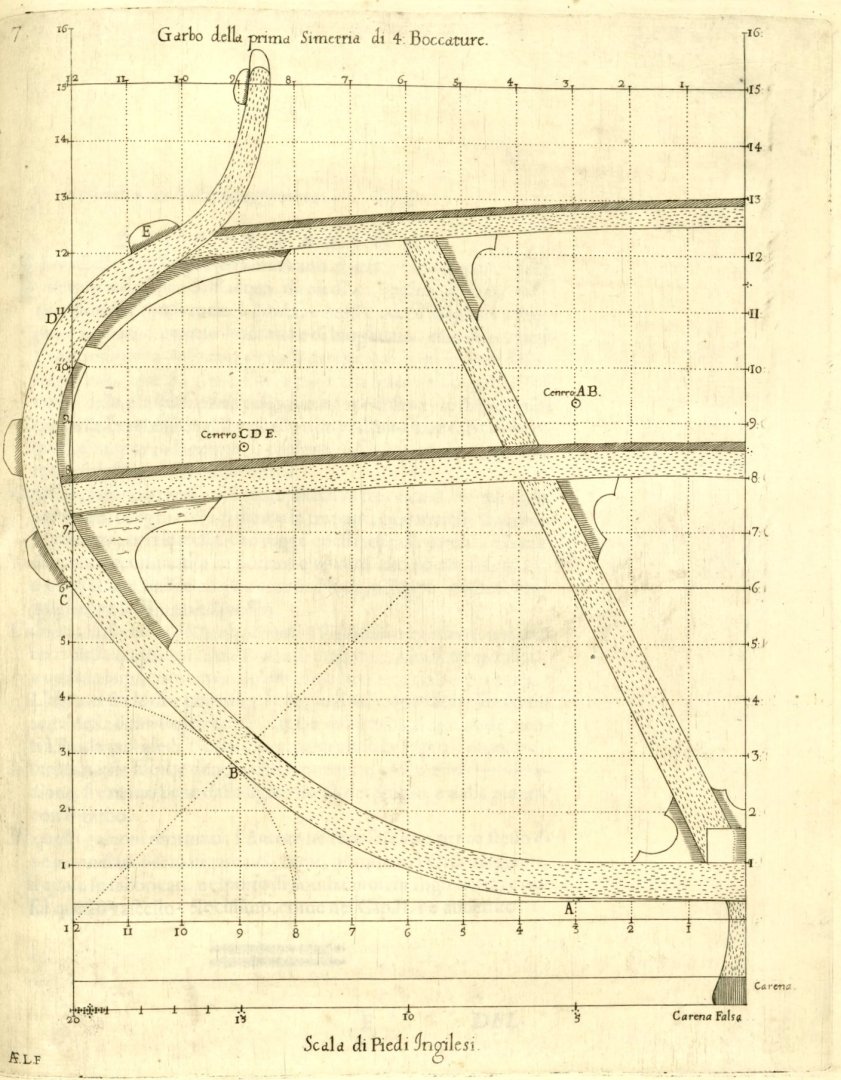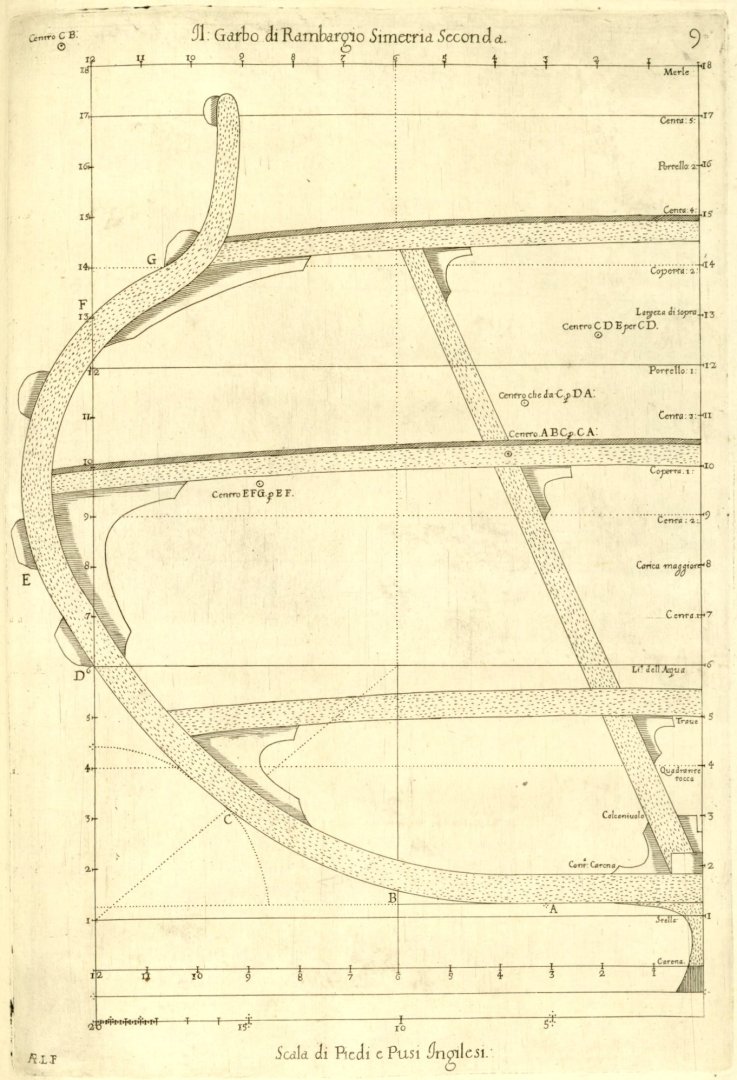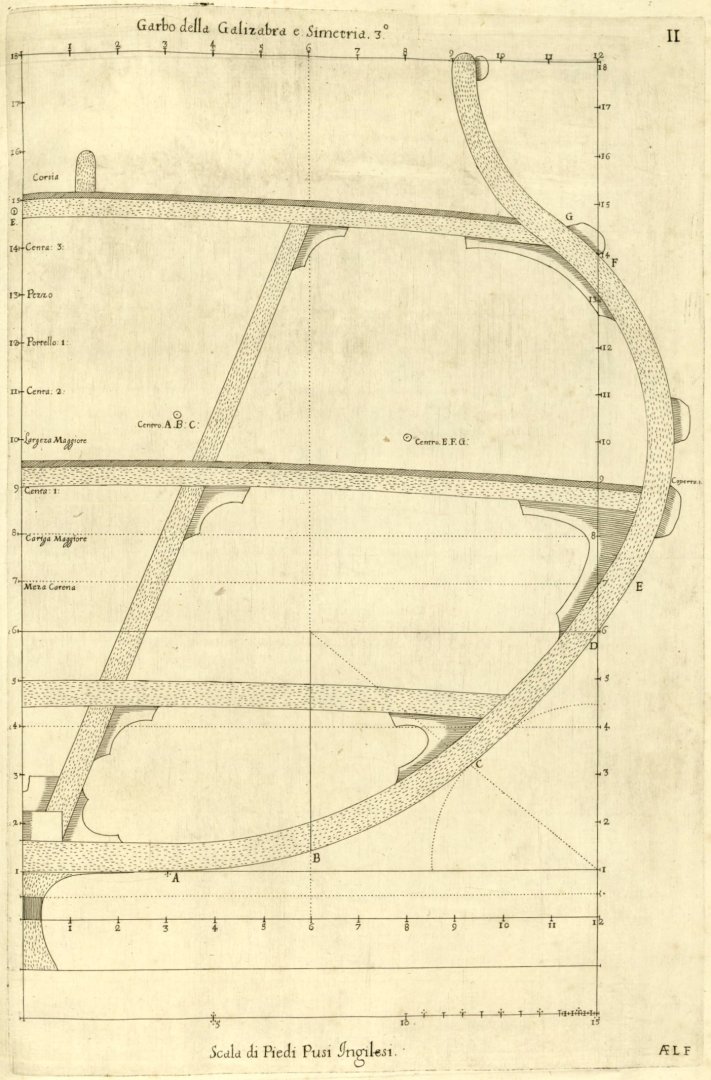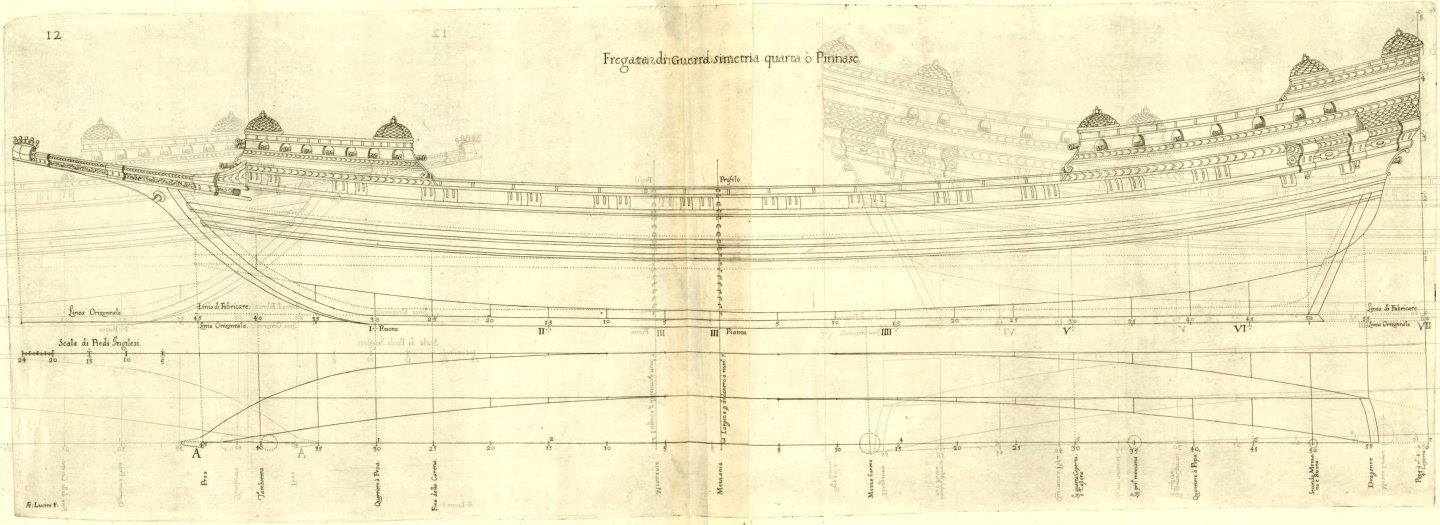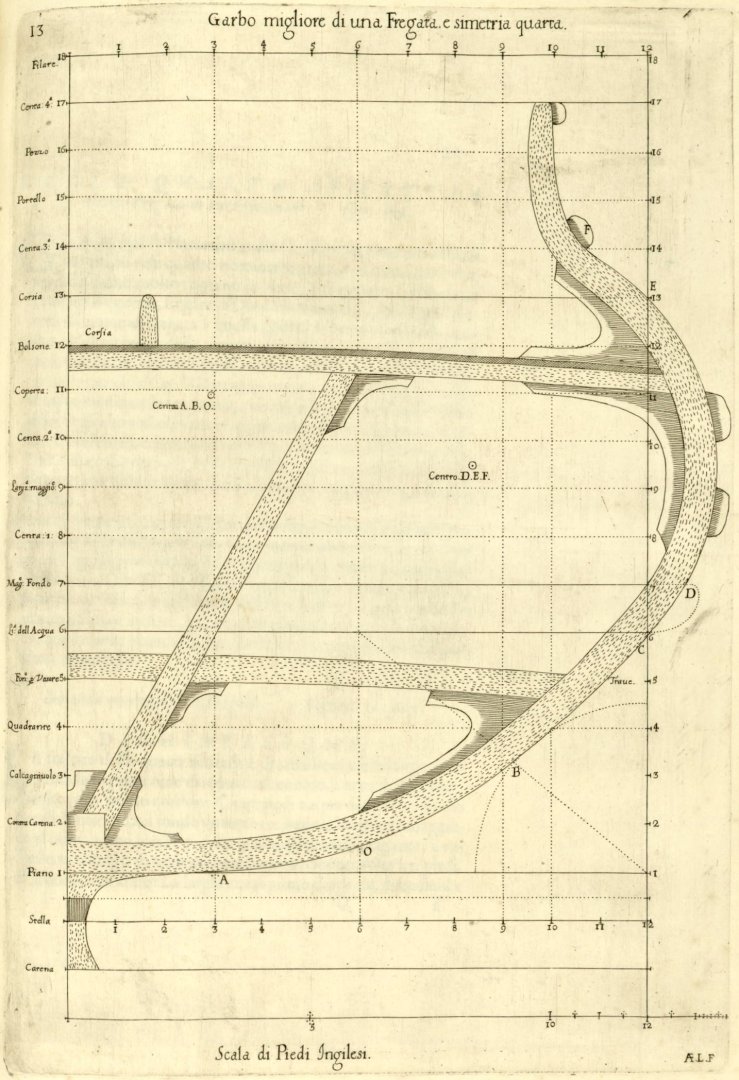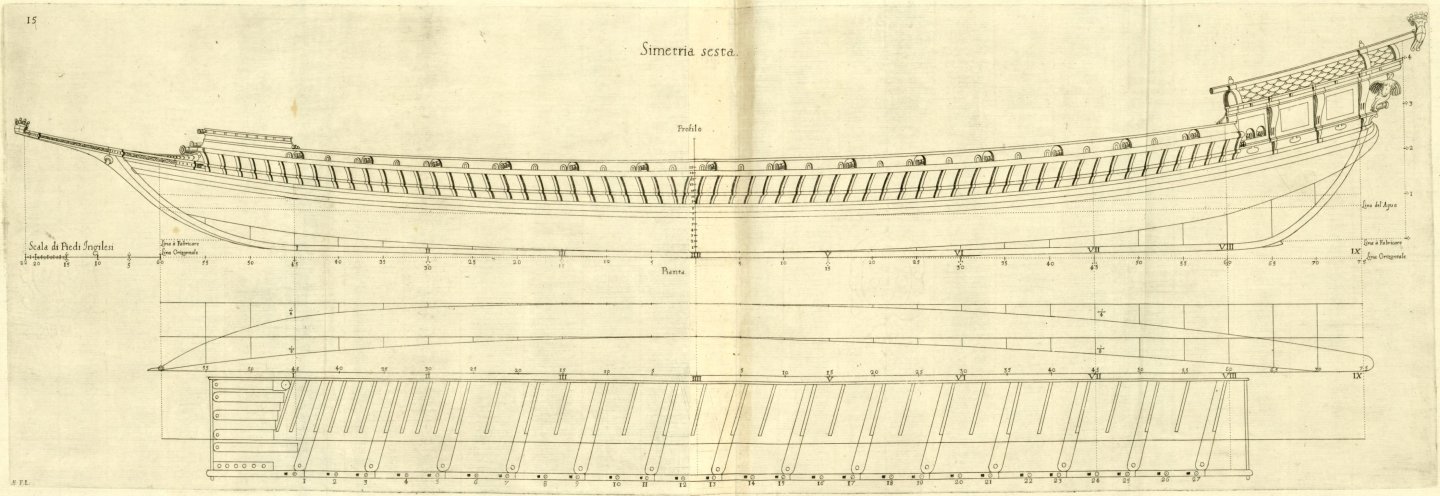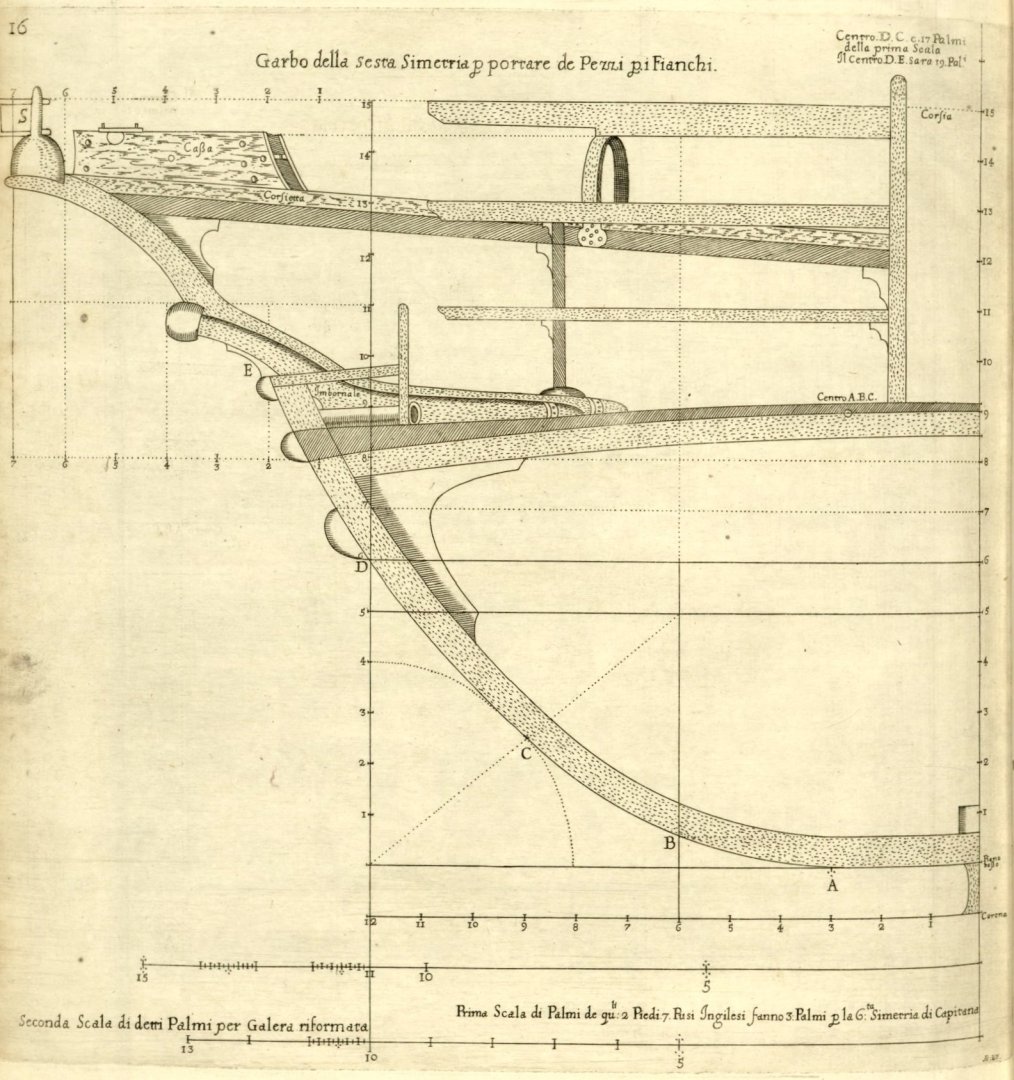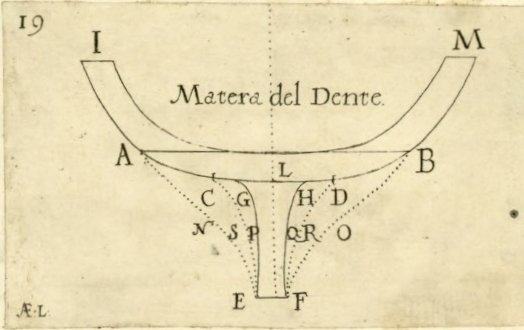.
Although the following translation of Robert Dudley's work has already been presented for the first time elsewhere, the great historical value of his explanations and their practical cognitive value (in a technical sense) seem to make it worthy of dissemination in other, easily and widely accessible places for those interested in the subject.At present, there are also plans to supplement this translation with an illustrative, yet comprehensive conceptual reconstruction of a sample vessel, using specific, and in some cases previously unknown design details, as explained by writing or drawing by Dudley.
As a whole, the design method employed and presented by Dudley in his work is relevant both to the Mediterranean area and, from around the Mathew Baker times up to the first decades of the 17th century, to (war)ships of British origin. Voilà.
* * *
Strange as it may sound, the important and extremely interesting chapter Della Fabbrica di Vascelli (‘On Shipbuilding’) from Robert Dudley's larger work, Dell'Arcano del Mare (‘The Mysteries of the Sea’), has so far been largely overlooked by authors of modern works on this subject, and has probably not even been retranslated into the native language of the author of this work, or at least no such translation has been published so far to my knowledge. This can be considered a serious oversight, especially on the part of the academic community, as this very chapter, together with its unpublished part, is at least equal in terms of its substantive value to other works on shipbuilding from this period, such as Baker's Fragments of Ancient Shipwrightry, an anonymous manuscript dated around 1620, or the so-called Newton manuscript from the second quarter of the 17th century.
What is more, Dudley's complete account, graphic par excellence (notably with its unpublished, handwritten part), perfectly complements the above-mentioned works and, in addition, greatly facilitates their proper understanding, especially since they have been misinterpreted by the academic community and various researchers through the unauthorised backward extrapolation of later English sources of this kind, such as the Anthony Deane's work from 1670 or William Sutherland's from 1711, which, together with other mistakes, inaccurate analyses and misinterpretations in this field, has had the unfortunate effect of creating modern concepts that dramatically distort the evolution of naval architecture during this period.
Although Dudley's work was published as late as 1646–1647, both his biography and the information contained in the publication itself indicate that Dudley uses and describes the method of ship design that was used in England around 1600, which he must have learned there before emigrating in 1605. This is the Mediterranean method, introduced in England around the middle of the 16th century, marked by a three-arch frame construction and the specific transformation of master frame mould, guided by the so-called “bocca” line (instead of the maximum breadth line). Over time, around the middle decades of the 17th century, this system evolved into a more advanced form, which can already be described as genuine English design.
At least for now, I intend to present a full translation of the chapter ‘On Shipbuilding’ (without focusing on linguistic perfection, if only because of the archaic, crazy syntax of the original Italian text, but rather on a factually correct and comprehensible rendering of the meaning of the statements) along with reproductions of graphics taken from both the printed publication and some unpublished ones (many thanks to @DonatasBruzas for pointing out the latter), as well as supplementary comments, explanations and my own illustrations where necessary and possible.
In total, approximately 73,000 characters, or 40 standard A4 pages of text.
Let’s start…
THE MYSTERIES OF THE SEA,
OF THE DUKE OF NORTHUMBERLAND
BOOK FOUR
ON SHIPBUILDING
by Design in general, of the invention of the Author.
Chapter I.
OF THE DUKE OF NORTHUMBERLAND
BOOK FOUR
ON SHIPBUILDING
by Design in general, of the invention of the Author.
Chapter I.
The Naval Architecture discussed in this book was invented and put into practice by the author himself in seven different designs of warships. The figures and proportions of these are shown in Chapters VIII to XV, with individual lines, profiles and moulds, with explanations and other necessary details.
So that the author's aim does not prove vain and superfluous, having dealt in the preceding Third Book with the ordinance of forces, the power and strength of ‘rambargi’ (rowbarges), ‘galezabre’, frigates and other vessels, he will now demonstrate the true science of design, so that everything can be put into practical execution.
And because words do not fight, but what has been promised will be produced in effect, & in practical action; demonstrating how skilled masters (who also understand something of mathematics) can build by design the vessels referred to in the following chapter, without the inventor himself being present; considering further that the hope of a victory at sea, in winning the day, depends mainly (thanks God) on the strength and quality of vessels that are well constructed and well disciplined, according to the instructions in the preceding Chapter.
Otherwise, it would have been highly impertinent of the author to criticise the shortcomings and failings of other warships without offering any remedy to improve them.
However, he deemed it expedient, for the reputation of his maritime Mysteries, to show in the best possible way the naval architecture of the construction of the following vessels; and all the more so because in this way a great prince can be victorious against the common enemy of Christianity, not only at sea but also on land, by means of maritime assistance; and the reason and cause for this is sufficiently demonstrated by the examples given in Chapter XV of the preceding Book.
.
Last edited:



